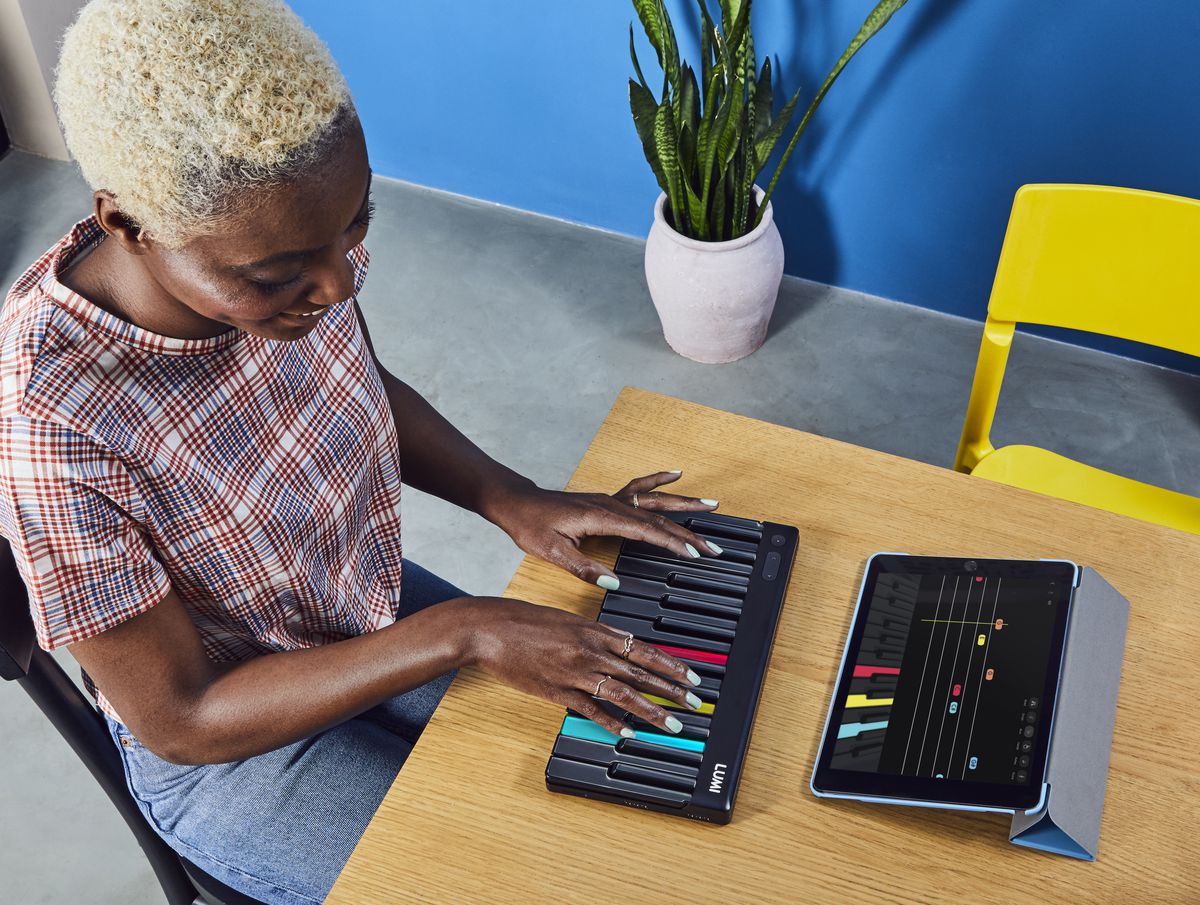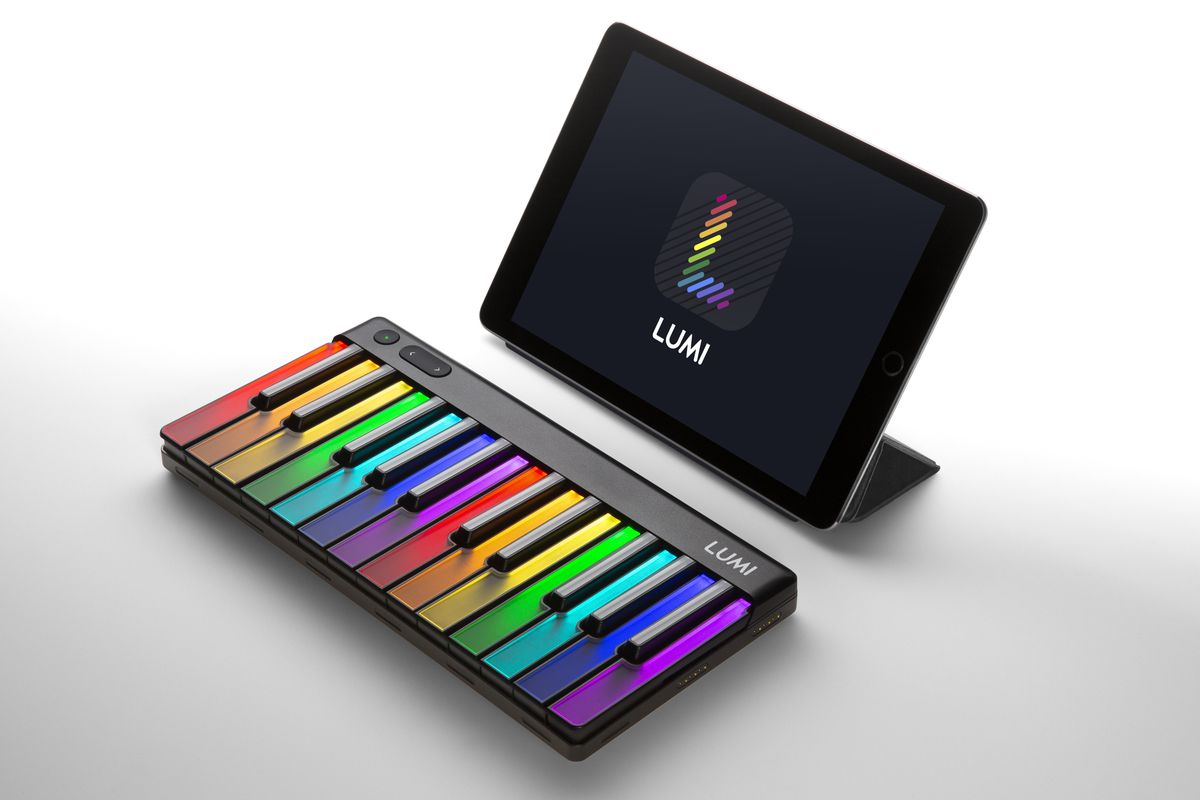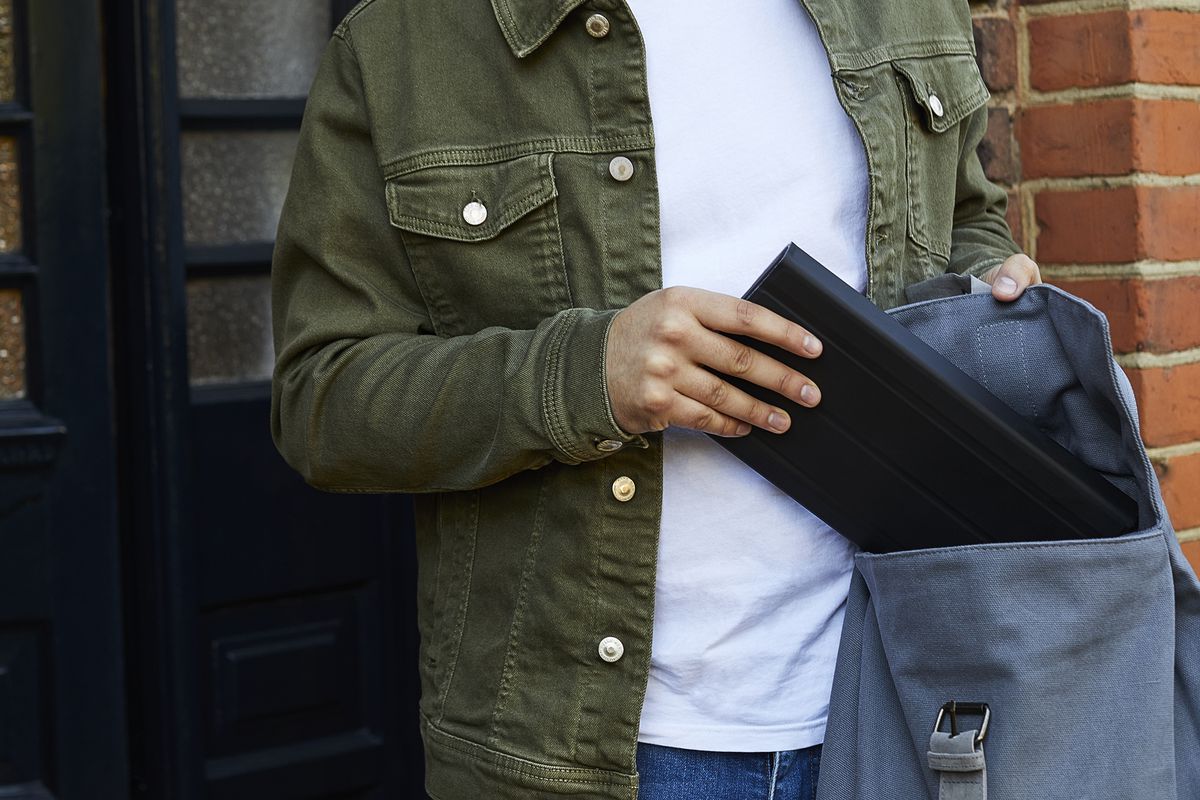Many people try to learn an instrument at one point or another in their life, and for a lot of us that instrument is the piano. But when you give up learning there’s no easy way back — not without paying for expensive lessons at least.
Music hardware startup Roli wants to change this with the launch of Lumi: a 24-key, light-up keyboard and companion app that teaches users how to play the piano from scratch, before transforming into a tool for jamming and even composition.
The keyboard and companion app are available to preorder on Kickstarter today with a base price of $249 and early bird sales as cheap as $150. Shipping starts in October.

Roli founder Roland Lamb says the aim is to appeal to as wide a group of music-lovers as possible. With that in mind, he says, Lumi’s learning functions don’t start by teaching you the basics of sheet music. Instead, Lumi offers a Guitar Hero-style interface that coaxes you into playing your favorite songs by hitting the light-up keys in time with on-screen notes.
“Music education frequently starts with reading music [but] no good language learning program starts by teaching you to read before you can speak,” Lamb tells The Verge. “Guitar Hero has a lot of value because it’s fun and easy to use — you just follow the lights.”
By giving users an intuitive interface that lets them play before they can read, Lamb says Lumi creates an easy on-ramp for beginners. After users progress past the Guitar Hero stage, the app makes things trickier by adding in first the names of notes, then a left-to-right interface, then chords and keys, and finally offering up regular sheet music.
This certainly seems like a good way to get beginners started, but an equally important part of the Lumi package is the library of songs.
In a demo version of the app The Verge briefly tried out, the tracks available were nicely varied. They included music from pop titans like Ed Sheeran and Bruno Mars, as well as jazz and classical standards from J.S. Bach to Herbie Hancock. Roli says the app will launch with a few hundred tracks, but that this library will be updated over time for no extra cost.

Lumi marks an interesting milestone for Roli. Since the company was founded in 2009, it’s made a series of products that have become progressively more mass market over time.
Its signature technology has always been its squishy keyboards, which are touch-sensitive and allow musicians to bend notes on a piano or synthesizer like they would on a guitar, but as the years go by it’s repackaged this into more and more affordable products.
It started with the 61-key, $2,999 Seaboard Grand in 2013, and then followed this with the 25-key, $799 Seaboard Rise in 2015. Then, in 2016 it released the modular beat-making Blocks hardware, and an even cheaper, smaller keyboard: the $299 Seaboard Block.
But Lumi feels like the first time the company has made a product that is supposed to appeal to people who aren’t already making music. Though Lamb hopes the music-making demographic will still get a kick out of Lumi. Multiple keyboards can be attached together to create larger playing spaces, and the device also works as a regular MIDI input which can be used with all the usual professional music software, such as Ableton Live and Cubase.
“The concept of having a very low floor and a high ceiling was always very important,” says Lamb. “I’ve had some really nice moments where I’ve had the chance to show Lumi to some eminent musicians and have them replay their track. It’s been very entertaining to see how they respond to their own music … they see how easy it is, how direct it is to play.”

But trying to appeal to as big a demographic as possible might also hinder Lumi. Even with its companion app and library of tracks, $249 is a big price for such a small keyboard. Using illuminated keys as a teaching device is also not a new concept. Casio sells a number of bigger, cheaper keyboards with light-up keys, for example (although they don’t have a companion app or popular songs). And you can even buy add-on LED strips for acoustic pianos that offer similar functionality.
During our time with a prototype version of the Lumi hardware, we were also a bit underwhelmed by the hardware’s quality and responsiveness. Too many key presses went unregistered, and the keys themselves felt overly flimsy and cheap.
Roli, though, says it’s still developing the final build for the keyboard, which we’ll try ourselves before the device’s launch. “The keyboard action is definitely something we’re tuning right now,” said Lamb. “It’s getting much better even as of a couple of weeks ago, and we’ll definitely be far and away the best of any portable keyboard of this size.”
These caveats aside, Lumi certainly offers some unique experiences. One stand-out feature is a jam mode in which keys light up with the chords and scales of a song. The stronger the color of each note, the closer it is to the root of the song’s key. It’s a simple approach that allows even jazz novices like myself to feel like they’re improvising with a degree of skill.
Lamb — an accomplished pianist himself — says it’s his favorite way to use the keyboard, especially when it comes to playing along with jazz standards from the likes of John Coltrane. “I love playing “Giant Steps“ in jam mode, because I can understand the chord changes in a different way,” he says. “It presents musical opportunities in a way I hadn’t seen before.”















![A detailed overview of Mechanical Pumps Market [PDF] with innovation in technology, various aspects of the industry – players, regions, types, and applications during the forecast period.](https://newsfortomorrow.com/wp-content/uploads/2021/01/A-detailed-overview-of-Mechanical-Pumps-Market-PDF-with-innovation-335x186.jpg)